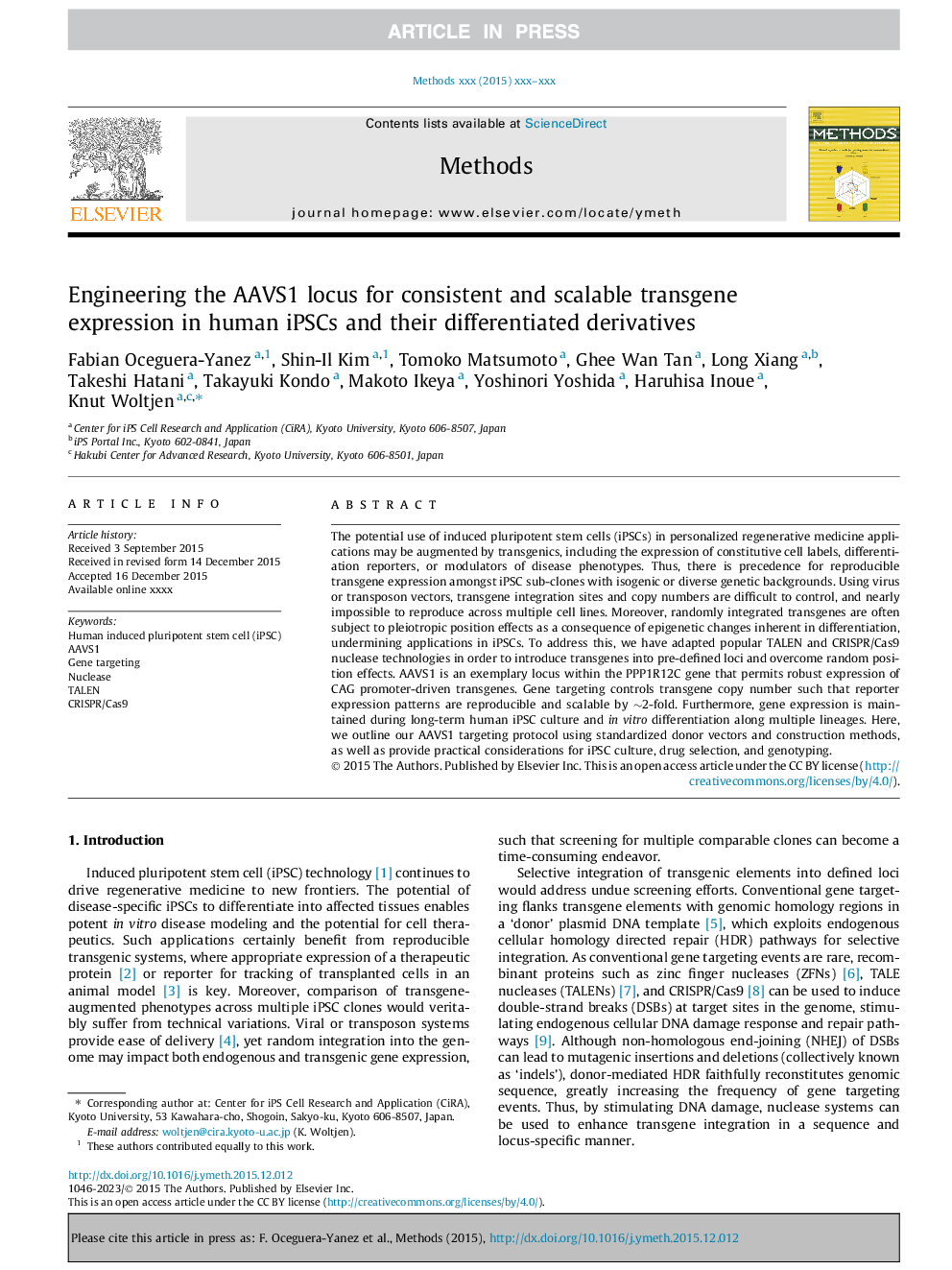| Article ID | Journal | Published Year | Pages | File Type |
|---|---|---|---|---|
| 8340299 | Methods | 2016 | 13 Pages |
Abstract
The potential use of induced pluripotent stem cells (iPSCs) in personalized regenerative medicine applications may be augmented by transgenics, including the expression of constitutive cell labels, differentiation reporters, or modulators of disease phenotypes. Thus, there is precedence for reproducible transgene expression amongst iPSC sub-clones with isogenic or diverse genetic backgrounds. Using virus or transposon vectors, transgene integration sites and copy numbers are difficult to control, and nearly impossible to reproduce across multiple cell lines. Moreover, randomly integrated transgenes are often subject to pleiotropic position effects as a consequence of epigenetic changes inherent in differentiation, undermining applications in iPSCs. To address this, we have adapted popular TALEN and CRISPR/Cas9 nuclease technologies in order to introduce transgenes into pre-defined loci and overcome random position effects. AAVS1 is an exemplary locus within the PPP1R12C gene that permits robust expression of CAG promoter-driven transgenes. Gene targeting controls transgene copy number such that reporter expression patterns are reproducible and scalable by â¼2-fold. Furthermore, gene expression is maintained during long-term human iPSC culture and in vitro differentiation along multiple lineages. Here, we outline our AAVS1 targeting protocol using standardized donor vectors and construction methods, as well as provide practical considerations for iPSC culture, drug selection, and genotyping.
Related Topics
Life Sciences
Biochemistry, Genetics and Molecular Biology
Biochemistry
Authors
Fabian Oceguera-Yanez, Shin-Il Kim, Tomoko Matsumoto, Ghee Wan Tan, Long Xiang, Takeshi Hatani, Takayuki Kondo, Makoto Ikeya, Yoshinori Yoshida, Haruhisa Inoue, Knut Woltjen,
